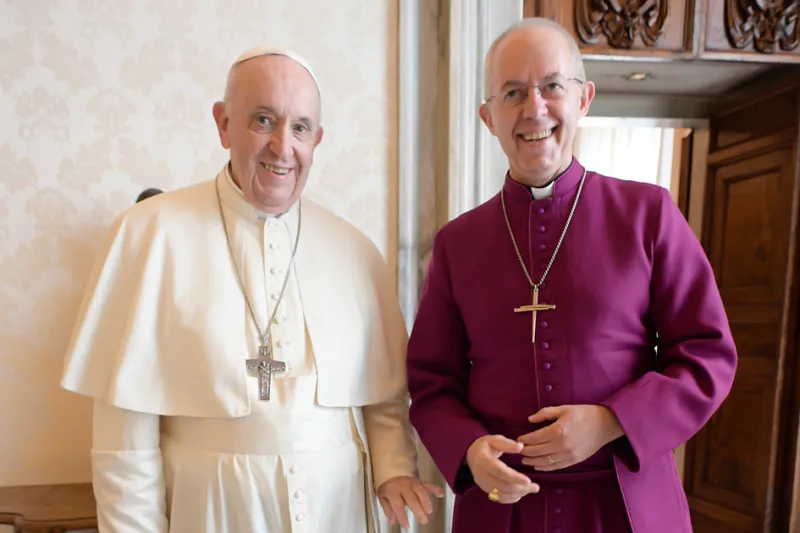
Canterbury, England, Aug 5, 2022 / 09:26 am (CNA).
In ecumenical discussions at the Lambeth Conference in Canterbury, England, Justin Welby, archbishop of Canterbury, has said that most Anglicans recognize the pope as “the father of the Church in the West.”
Welby said that he is “not proud” of the level of progress made in promoting Christian unity in recent years. He attributed this stasis in part to what he termed “habits of separation” that have been fostered over the last 500 years.
Nonetheless, he believes that the majority of the Church of England’s members acknowledge the pope to be “the father of the Church in the West.”
Addressing the conference, Cardinal Kurt Koch, prefect for the Dicastery for Promoting Christian Unity, stressed the urgency of ecumenical dialogue. Koch called the present state of division an “emergency” in the Church.
Speaking to the Tablet, Catholic Archbishop of Birmingham Bernard Longley noted the ability of the conference to cement the unity of the Anglican Communion.
Longley pointed out that the road to wider Christian unity and dialogue between the Anglican Communion and the Catholic Church would be “hampered” if the former were to divide.
The 2022 Lambeth Conference runs from July 26 until Aug. 8. Over 600 bishops representing Christian communities from the Anglican Communion have gathered in Canterbury for a program of lectures and discussions on a range of topics, from peace and reconciliation to environment and sustainability.
Welby’s comments on ecumenism follow his call for a vote on banning same-sex marriage earlier in the conference. However, Welby said at a press conference in March that debates about human sexuality should not dominate this year’s Lambeth Conference.
The theme of the event is “God’s Church for God’s World: Walking, Listening, and Witnessing Together.”
If you value the news and views Catholic World Report provides, please consider donating to support our efforts. Your contribution will help us continue to make CWR available to all readers worldwide for free, without a subscription. Thank you for your generosity!
Click here for more information on donating to CWR. Click here to sign up for our newsletter.




What exactly is the Archbishop of Canterbury’s point about a vote banning homosexual unions?
And what sort of committees come up with those event titles? “God’s church for God’s world. ” I mean who else’s church would it be? For goodness sake.
The Catholic Archbishop of Birmingham notes the ability of the [Lambeth] conference to cement the unity of the Anglican Communion? Hmm.
The two fellows on Anglican Unscripted don’t seem to be privy to this news.
“Church in the West” is not the Catholic Church. It would be a made up idea to suit the on-going arrangement/discourse/intercourse that is not the Catholic Church either.
Moreover God is our Father and the Pope is the Vicar of Christ the Redeemer. The Church is the Bride of Christ.
Then too in same vein Anglicans would be deciding who the “father” is “for the “East” and they would be responsible for the timing.